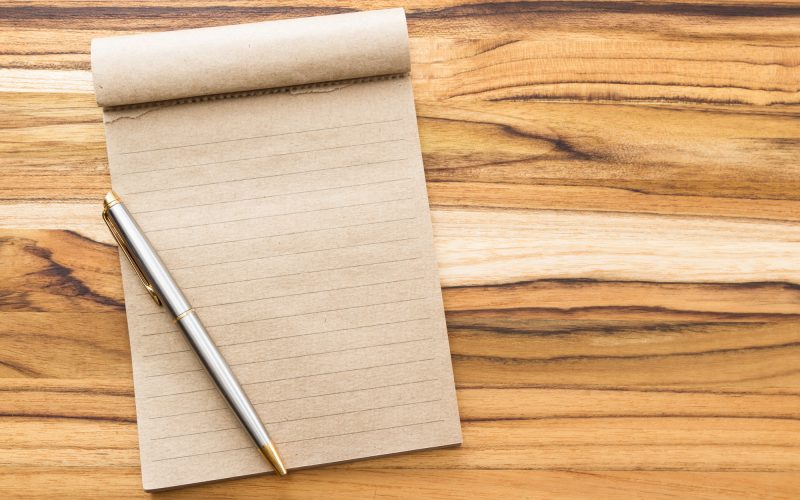While school provides a fantastic opportunity to learn about a bevy of important subjects like math and language arts, we often forget about other lifelong skills such as note-taking.
Taking notes is one of the most effective study tools in a student’s arsenal. However, not everyone takes great notes — or notes at all, for that matter.
Students looking to boost their grade have come to the right place! Here’s a note-taking guide to help students ace those exams and establish good study habits.
Effective Note Taking Methods Aren’t Universal
When it comes to creating great notes, there’s only really one universal truth: Everyone learns in a different manner.
And as a result, no two people are going to take notes in the same fashion. They may use similar methods, sure, but everyone’s brain interprets information in a unique way.
Therefore, everyone needs to find the best style of note taking that works for his or herself.
Yes, we said style. As it turns out, scholars have classified a number of note-taking methods including:
- Outlining
- Listing
- Mind-mapping
- Using full sentences
- SQ3R (survey, question, read, recite, review)
Who knew note taking was such a complex topic?
The trick is to find a strategy that works for you. Experiment with a variety of methods and don’t be afraid to think outside the box.
What matters most is that students are able to retain the knowledge learned in the classroom through their notes.
Physical Vs. Digital: Which Is Better?
Technology has come a long way since computers were first introduced into the classroom.
While the students of years past only used computers to learn to type and play the occasional game of Oregon Trail, technology may just be the modern student’s best friend when it comes to note-taking.
With that said, a debate about the utility and practicality of digital note-taking rages on among educators.
So much so, in fact, that scientists are actively researching whether taking notes by hand or typing them out helps students retain more info.
While the data is far from conclusive, current studies seem to indicate that the physical act of writing notes aids long-term retention.
So while that laptop or tablet may have some great note-taking features, it may be best to stick to the tried-and-true pen and paper method.
Establish Good Shorthand
Whether you choose to write or type your notes, attempting to transcribe everything the professor says is a big mistake. While it may be tempting and could even help you pay attention in class, it’s more of a distraction than a helpful study tool.
Instead, try and establish a good shorthand. Writing in full-length sentences is time-consuming and can leave you with hand cramps, so only focus on keywords and ideas.
Notes don’t have to be complete sentences, either. A few jotted ideas are more than sufficient as long as the student can understand them.
Rewrite Notes In Plain Language
On that note (no pun intended), it’s worth mentioning that there’s no harm in rewriting a professor’s notes in one’s own words.
In fact, the very act of encoding the information in a way that’s easy for you to understand can be extremely beneficial.
Not only will this speed up the note-taking process, but when it comes time to study, the notes will make more sense. For example, say a teacher is lecturing on the main ideas of Hamlet.
A student could write down the majority of the lecture. But a more efficient note-taking method is to sum each idea up in a sentence or two, like:
“The main theme of Hamlet is justice,”
or
“Professor says [idea] is a critical component to the story.”
Notes don’t need to be verbose, they just need to be legible and comprehensive enough that they embody the information.
Organize Notes Effectively
Whichever style or method one uses to take notes, it’s important that they’re organized. Otherwise, it’s easy to miss out on information or lose one’s notes when it comes time to sit down and study.
Start by writing the day’s date and course subject at the top of the page. Next, jot down the encompassing topic of the day’s lecture.
Now is where the creativity kicks in. While students should experiment with note-taking methods to see which works best for them, we still recommend some form of logical flow.
Bullet points, lines, underlines, and even highlighting is a great way to make information stand out while looking neat and organized.
As a brief aside, try and keep notes separated by course. It’s easy and can save a whole lot of confusion down the road.
Those who prefer to take notes digitally can create a new folder while those who prefer to write their notes on paper can use dividers or an entirely separate notebook.
Re-Read Notes After Class
So far we’ve detailed some great ways to take notes, but what should you do with notes after class?
First, store them in a safe location.
Digitally, this means storing them in the cloud so you don’t lose them if your computer crashes. Physically this means a folder or binder. After all, it doesn’t matter how well one follows this note-taking guide if they lose their notes.
Next, be sure to look over the notes before heading off to the next class.
Not only will this help students comprehend the info they just learned, but if a student needs more detailed notes or has a question, they can simply ask the teacher.
Use This Note-Taking Guide To Ace Exams
While this note-taking guide is designed to help students make the most of their notes, nothing beats hard work and studying.
Great notes are helpful, but only if one takes the time to read over them and study.
Looking for more useful hacks to get the most out of your life? Be sure to keep visiting Paldrop for more great life hacks to help you get the most out of everyday life.
